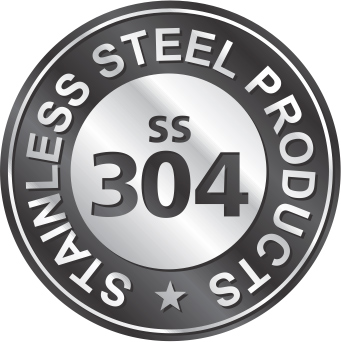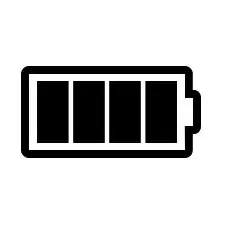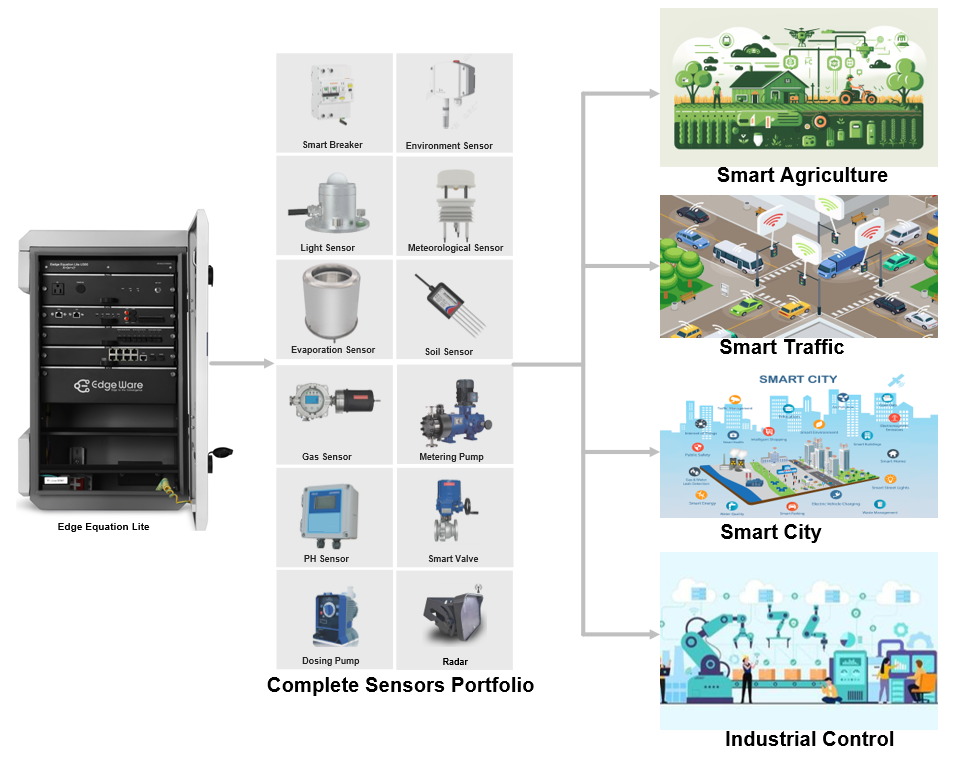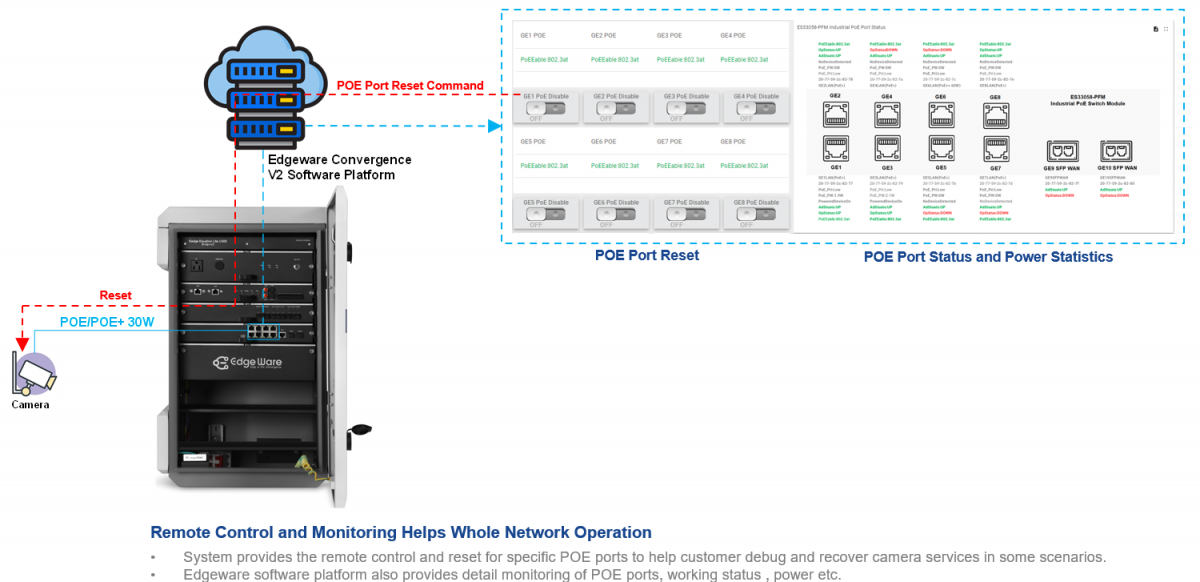Starlink Solar System with POE and IoT Control-Edge Equation S500D-ST
500W MPPT Solar Controller, Lithium Battery, Starlink POE, Normal POE, IoT Router All in One System

Starlink Solar System with POE and IoT Control-Edge Equation S500D-ST
Edge Equation S500D-ST is a Starlink solar system with POE and IoT control system. It is designed based on the power consumption requirements of the Starlink Standard Actuated version and integrates a series of devices such as MPPT solar controller, lithium battery, Starlink PoE, PoE+/PoE++ Switch, and IoT router to achieve one-stop Starlink rural area deployment.
Please note that this system is designed for the power consumption of the Starlink Standard Actuated version. If you need other versions of the Starlink system, for example:
- Starlink Standard & Starlink Enterprise
- Starlink Mini
- High Performance and Flat High Performance
Please contact our sales staff and we will provide the corresponding Starlink solar system configuration based on your version.
If you are not sure about your version, please refer to the following link:
Challenges of Starlink Deployment Scenarios
Starlink is usually deployed in rural areas where it is difficult for the network to cover. These areas face the following challenges:
- Usually no electricity
The areas where Starlink is deployed are remote area, and many places do not have electricity. Especially when Starlink is used in scenarios such as school coverage in remote mountainous areas, network coverage in remote villages, and network coverage of government agencies in remote areas, it is particularly easy to have no electricity at the same time. At this time, solar energy systems are needed to provide electricity.
- The site is remote and installation and debugging are difficult
Because the site is located in a remote area, installation and debugging after arriving at the site will be relatively difficult. In general scenarios, Starlink is only a network backhaul, and the entire scene must include various devices such as WIFI AP, server configuration, CCTV camera setup, etc. If the installation and debugging of the Starlink solar system is added, the overall installation and debugging of the site will become very complicated. At this time, senior engineers have to be sent, which greatly increases the cost.
- Complex and diverse environment
The installation environment in remote areas is diverse, and it is difficult to ensure that the equipment is installed in a suitable temperature and humidity environment, not to mention the data center room. In extreme cases, it may even be installed outdoors. Therefore, the entire system design is best based on industrial-grade design, which can adapt to complex external environments.
- Multiple scenarios, diverse applications
Starlink only solves the problem of network backhaul, but network backhaul is based on different application scenarios for different projects and scenarios. For example, the network architecture, equipment, and configuration behind school network coverage and government network coverage are definitely completely different. If the site is built case by case, the time, installation, and commissioning costs will be high.
Weakness of Traditional Solar System to Build Starlink Solar Solution

Starlink solves the problem of backhaul network, but supporting equipment needs to be built based on the backhaul network to meet the needs of the project scenario. In the above figure, we use a type of equipment that may appear in a general project to build a solar for starlink system. We will find that it is not easy to build this network in remote areas. In big cities, we can easily build an ICT network. If there are any problems, we can easily go back to the headquarters to seek spare parts, seek help, etc. However, the deployment scenario of Starlink is often in the following environmental conditions:



The challenges of using traditional methods to build Starlink and its supporting network applications in these environments are obvious. In summary, there are the following aspects:
- Complex power and network connections
The entire system needs to consider the interconnection of power between systems, as well as the interconnection of network devices such as Camera and WIFI AP.
- Voltage conversion when IoT sensor is required
If IoT sensor needs to be deployed, its voltage format is different from the general AC voltage, so there are various power adapters, which makes the entire power supply network more complicated.
- Traditional solar system is too large if used for Starlink solution
The overall design of traditional solar system is too large. Because the whole solution is a patchwork solution, whether it is solar inverter, solar panel or lead acid battery, it is quite large. And these systems are carried to remote sites as a whole, and they have to be installed and operated, which is obviously more difficult than implementing them in cities. At the same time, because the sites are remote, the transportation cost of transporting these devices to remote areas is high.
- On-site integration and debugging increase costs and extend the time it takes to get a site ready
First, due to this site construction model, it is impossible to complete the equipment connection and debugging at the headquarters. It is necessary to connect the cables according to the site conditions after arriving at the site before debugging can be completed. This greatly increases the debugging cost and extends the actual delivery time of the site.
All in One Starlink Solar System

Compared with the traditional way to build solar for Starlink system, Edgeware provides an all-in-one solution. We believe that solar site is a smart node aggregation node. Through Edgeware’s Edge Equation series modular cabinet smart node technology, we integrate solar POE, IoT router, lithium battery, edge computing and other technologies into an IP55 enclosure. This system has the following main features:
Starlink POE
System is equipped with a Starlink-specific POE port, which simplifies the Starlink cable from a complex configuration of AC cable plus Ethernet cable to a single Ethernet cable that provides both power and network signals.
802.3at POE+ and 802.3bt POE++
The all in one Starlink UPS can be configured with POE+ and POE++, which can provide energy for all types of POE devices such as CCTV camera, WIFI AP, etc.
DC12V/DC24V and Modbus
The all in one solar system can be configured with DC12V/DC24V and modbus according to customer needs so that external IoT sensors can be integrated.
High Power Density Lithium Battery Can be Customized Based on Customer Scenario
The all in one Starlink solar system can configure lithium batteries of different capacities according to the customer’s load and system autonomy time to meet customer requirements. At the same time, due to the higher power density of lithium batteries compared to lead-acid batteries, the batteries are lighter and smaller in size, thus simplifying the process of transporting equipment to the station.
IoT Router with Edge Control and Computing
The all in one Starlink solar system has an embedded IoT router with edge control and computing capability, which makes it easy to effectively monitor and manage the entire system while integrating and processing data from IoT sensors.
Cloud Management Software Platform
The system can be managed and monitored through Edgeware’s Convergence Software platform, and data from various IoT sensors can be integrated for data visualization. If necessary, we can also report data to a third-party management software platform.
Features of Edge Equation S500D-ST Starlink Solar System

Modular Design
The entire Starlink solar system is based on modular design. Different from the traditional outdoor solar cabinet, Edge Equation uses a slot-based design for functional modules such as solar , MCU, Battery, POE Switch, 4G/5G, etc. This makes it easy to repair and replace, and each module is pre-integrated at the factory without complicated wiring and on-site integration. This greatly enhances the reliability and delivery speed of the system.

Enhanced Security with Remote Control Door Lock
Considering the security of the whole system in rural area, Edge Equation S500D-ST starlink solar is equipped with remote control door lock. This lock can only be unlocked remotely through the software platform, and the lock is placed inside the cabinet to prevent any unrelated person or thief from stealing the battery, thus better protecting the availability of the whole system.

Starlink POE Function Embedded
Designed for Starlink scenarios, it is specially embedded with Starlink-specific POE function to simplify the installation and debugging of Starlink.

304 Stainless Steel for Rust Proof
The system casing is made of 304 stainless steel, making the entire system better adapted to Starlink’s working environment in rural areas and rust proof.

IP55 Ingress Protection
The system fully considers the possible deployment scenarios of Starlink, both outdoor and indoor. Therefore, the system is designed with IP55 ingress protection so that it can be well adapted to the deployment environment of the Starlink solar system.

Outdoor Optimized Rugged Design
The entire cabinet is made of high-strength stainless steel, the whole system is rugged design, and key components such as solar controller, POE switch, etc. are all industrial-grade designs. The entire system can adapt well to the challenges of long-term complex environments.

No Rust for Long Term Operation
With a rust-proof design, system ensures that the entire system is completely free of rust and can operate stably for a long time.The whole system is well adapted to Starlink’s deployment environment, both indoors and outdoors.

Surge Protection
System with comprehensive lightning protection design which is dedicated to outdoor environment.

1+1 FAN System with Hot Swap
The system is configured with a 1+1 FAN system that modulates speed based on system temperature. A single FAN can maintain the entire system operating within a normal temperature range, thereby improving the availability of the entire system in rural areas and minimizing the probability of on-site maintenance due to fan damage. At the same time, the fan unit can be host swapped without shutting down the entire system power supply.

Customized Battery Capacity
The battery capacity is designed entirely based on the customer’s load and system autonomy time, and the battery is minimized and lightweight to simplify transportation to remote sites, reducing transportation and installation costs.

POE+/POE++Functions
The system has PoE+ Ports Can also add one PoE++ 802.3bt port which can reach 110W. It can be adapted to most POE devices, thus simplifying the installation of customer equipment in Starlink scenarios.

IoT Sensor Control Interface
System supports 2 RS485, 1 RS232, 1 DI, and 1 DO. Modbus can be run on RS485. Therefore, customers can build their edge control site with control devices functions such as battery BMS, solar controller, IoT Sensors, etc. If customer request more interfaces, we can add based on customer request.

IoT Edge Computing and Control
The system can configure edge computing and control core to manage and calculate edge IoT and other devices, and transmit these data back to the server software platform with Starlink, so as to extend IoT to remote areas that are difficult to reach through various networks. At the same time, edge computing and control core can also use its own protocol capabilities to connect the site

WIFI Supported
System has 802.11n WIFI function as optional . It can provide small amount of WIFI access for users in edge network scenarios. It can also facilitate engineers to access WIFI for configuration and maintenance.
Edge Equation S500D-ST Starlink Solar System Main Specification

- Industrial level 500W MPPT Solar Controller
- 1 port Starlink POE port to power Starlink antenna as well as working as WAN port of the whole system.
- Starlink POE has 120W, 200W, 320W options.
- 6*802.3at(PoE+) ports , 2*802.3bt PoE 110W Ports
- IoT Router with 4*1000Base-T LAN ports and 1*1000Base-T/1000Base-X combo WAN port
- Edge computing module to control the whole system with UPS, Battery and in enclosure environment. Also can use RS485 RS232 DI DO to integrate IoT sensors thrid party.
- Lithium battery 80AH(48V)with 3840Wh power that can support the whole system to run for 48 hours without sunshine. Can reduce or increase the battery capacity based on customer request.
- IP55 ingress proteciton to be ready for outdoor deployment
- Configured with comprehensive system monitoring for in enclosure environment, AC input voltage current power, battery management, UPS management, POE management.
- 20Ka surge protection
- 4G module CAT1/CAT4/CAT6/CAT12 can be embedded, GPS and WIFI function as optional.
Dimension and Weight

Edge Equation S500D-ST Starlink Solar System’s dimension and weight as followings:
- The weight of the whole system is 22kg (without battery installed)
- Dimension of the whole system: 348mm*632mm*255mm (W*H*D)
Installation of Edge Equation S500D-ST Starlink Solar System

Pole Mounting Installation
Edge Equation S500D-ST Starlink Solar System supports pole mounting installation

Wall Mounting Installation
Edge Equation S500D-ST Starlink Solar System supports wall mounting installation
Application of Edge Equation S500D-ST Starlink Solar System

The figure above shows a typical application of Edge Equation S500D-ST Starlink Solar System. Starlink can be used to extend the network to areas that were not so easy to cover before. Then, all services of the site are integrated into the smart node of Edge Equation, thereby simplifying the complex service connections of the site and greatly accelerating the deployment of customers. Edge Equation S500D-ST Starlink Solar System is the core of power, the aggregation node of the entire network, and the core of control and management. Thus, one-stop deployment is achieved.
POE for Starlink

Edge Equation S500D-ST Starlink Solar System is configured with POE port for Starlink by default, which simplifies the installation and connection of customer Starlink antenna. According to different customer usage scenarios and different power requirements of Starlink, we provide three different levels of Starlink POE configurations: 120W, 200W, and 320W.
Remote Control Lock for Enhanced Security


The system has a built-in remote control lock for enhanced security. This lock can only be unlocked from the software platform, thus preventing unauthorized persons from opening the cabinet or even stealing batteries.
IoT Sensor Integration Capability

This outdoor solar battery cabinet is an all-in-one system that can integrate IoT sensors. Edgeware’s portfolio has a large number of different sensors to help you build a total solution for IoT scenarios. At the same time, we can also help integrate your IoT sensor into our system software and ultimately deliver and deploy it as a total hardware and software solution.
Solar Power Statistics

The Edge Equation S500D-ST Starlink Solar System has a built-in complete solar energy statistics algorithm that can realize hourly, daily, monthly and yearly statistics of various parameters such as solar energy generation, use and storage on the local site and central software platform.
PoE Load Turn On/Off Based on Time Scheduling

The Edge Equation S500D-ST Starlink Solar System can be configured to turn off or on PoE devices based on time. This can better adapt to the scenarios of Starlink network coverage in remote areas. For example, in schools and government branches in remote areas, most of the equipment does not need to be turned on at night, so some loads can be turned off at night and all loads can be turned on during the day. This can optimize the use of batteries to the greatest extent, and can better use less battery capacity to achieve the same design goals compared to the original design, thereby minimizing costs.
PoE Load Turn On/Off Based on Certain Condition

Different loads in the Solar for Starlink scenario definitely have different usage priorities. In some special cases, the loads of different priorities can be turned on and off based on certain conditions. For example, when the system finds that the battery capacity is lower than the preset threshold of 40%, the load line with low priority can be turned off, and the load with high priority can be retained. In this way, in some special rainy weather, the battery can ensure that the load with high priority can work as long as possible, thereby ensuring the availability of the entire system.
Solar Controller Remote Monitoring

The solar controller built into the system can be remotely monitored and managed through the software platform. Therefore, the OAM engineers in the NOC center can know the working status and core parameters of the solar controller, and know what kind of error has occurred in some abnormal situations, so as to provide more detailed information for on-site debugging and avoid high operation and maintenance costs caused by multiple on-site debugging.
Support Main Steam VPN

There are two main problems when using the Starlink solar system to achieve coverage in remote areas:
- How to effectively plan the entire network IP so that the entire network can be managed and maintained like a LAN
The mainstream VPN technologies supported by the system, such as IP SEC VPN, L2TP, GRE, etc., enable the entire network to be well planned in advance, facilitating future maintenance and network interoperability.
- How to ensure network security
The encryption technology of mainstream VPN technology and good network planning prevent unauthorized users from accessing important equipment such as data center servers.
POE Ports Remote Control

Because many Starlink sites are located in remote areas, when some equipment such as WIFI AP or camera freezes, the cost of engineers going to the site for maintenance is very high. To address this problem, the Edge Equation S500D-ST is designed with the function of remote control of PoE port. When a camera is found to be frozen, the PoE port can be remotely restarted to restart the camera. This can help solve many simple problems and avoid engineers having to go to the site to solve them as much as possible.
Remote Battery Management and Monitoring

All lithium batteries provided by Edgeware have built-in perfect BMS system, which can well manage and monitor the status of batteries and obtain core parameters. Therefore, OAM engineers can obtain various parameters of battery operation status at HQ.
Specifications
Edge Span S500D-ST Starlink Solar System Specifications | |
Dimension | W*H*D 348mm*632mm*255mm |
Weight | 22kg(without Battery) |
Material | 304 Stainless Steel |
Ingress Protection | IP55 |
Heat Dissipation | 1+1 FAN Controlled Based on Temperature Hotswap |
System Operating Temperature | -20~+55°C, 5%~90% RH Non condensing |
Solar Controller | MPPT Solar Controller 500W 10A 48V |
Battery | 48V80AH Lithium Battery with BMS(3840Wh) |
Surge Suppression | 20KA |
Protection | Remote control power on and off from Edgeware convergence platform 20A 110v/220v Leakage Protection Overvoltage Protection Under Voltage Protection Overcurrent Protection Short circuit Protection Lightning Protection |
Starlink POE | 120W, 200W,320W based on customer scenario to configure With SPD embedded. |
Network Module: | IoT Router Module GE Downlink: 4*10/100/1000M Base-T ports GE Uplink : 1*10/100/1000M Base-X or Base T ports |
PoE: | 6*POE/POE+ Ports with 30W max power per port 2*POE++ Ports with 110W max power per port (Optional ) Total power should not be bigger 240W
|
Output Power | DC48. DC12V,DC24V can be customized based on requirement |
Output and Input Signal | RS485(Modbus), RS232, DI, DO can be configured based on customer reqquest |
System Monitoring and Management | Work with Edgeware Convergence software platform to perform system monitoring and management |
Environment Monitoring | System temperature, humidity. |
Solar Controler Status Monitoring | Input Voltage, Output Voltage Input/Output Power,Rated Power Battery Charge/Discharge Current Input Current, Load Current Normal, Solar Power Offline, Fault |
Solar Power Input Monitoring | Remote Control Failure Status Voltage Current Undervoltage Overvoltage Overcurrent Current leakage |
Battery Status Monitoring | Battery voltage , current, remaining capacity, temperature Battery working status, battery charge and discharge current Battery health estimation( Battery life time estimation ) |
Typical Application Scenario | Solar Starlink Site |
| WIFI(Optional) | |
| WIFI Mode | IEEE 802.11b/g/n/ac, Access Point (AP), Station (STA) |
| WiFi Security | WPA2-Enterprise – PEAP, WPA2-PSK, WEP, WPA-EAP, WPA-PSK; AES-CCMP, TKIP, Auto Cipher modes, client separation |
| SSID | SSID hidden mode,dual SSIDs. |
| Network Protocol | |
| Routing | Static routing, Dynamic routing (BGP, OSPF v2, RIP v1/v2, RIPng) |
| Network protocols | TCP, UDP, IPv4, IPv6, ICMP, NTP, DNS, HTTP, HTTPS, FTP, SMTP, SSL v3, TLS, ARP, VRRP, PPP, PPPoE, UPnP, SSH, DHCP, Telnet client, SNMP, MQTT, Wake On Lan (WOL) |
| Connection Monitoring | TCP-Ping Reboot, Periodic Reboot, LCP and ICMP for link inspection |
| DHCP | Static and dynamic IP allocation, DHCP Relay |
| Network Backup | WAN and Mobile back up, can be one as main one as backup. |
| VPN | |
| OpenVPN | Multiple clients and server can be running simultaneously, 12 encryption methods |
| OpenVPN Encryption | DES-CBC, RC2-CBC, DES-EDE-CBC, DES-EDE3-CBC, DESX-CBC, BF-CBC, RC2-40-CBC, CAST5-CBC, RC2-64-CBC, AES-128-CBC, AES-192-CBC, AES-256-CBC |
| IPsec | IKEv1, IKEv2, supports up to 4 x VPN IPsec tunnels (instances), with 5 encryption methods (DES, 3DES, AES128, AES192, AES256) |
| GRE | GRE tunnel |
| PPTP, L2TP | Client/Server services can run simultaneously |
| Management | |
| SSH | SSH (v1, v2) |
| SNMP | SNMP (v1, v2, v3), SNMP trap |
| MQTT | MQTT |
| GPS | |
| GPS | GPS Ooptional |

